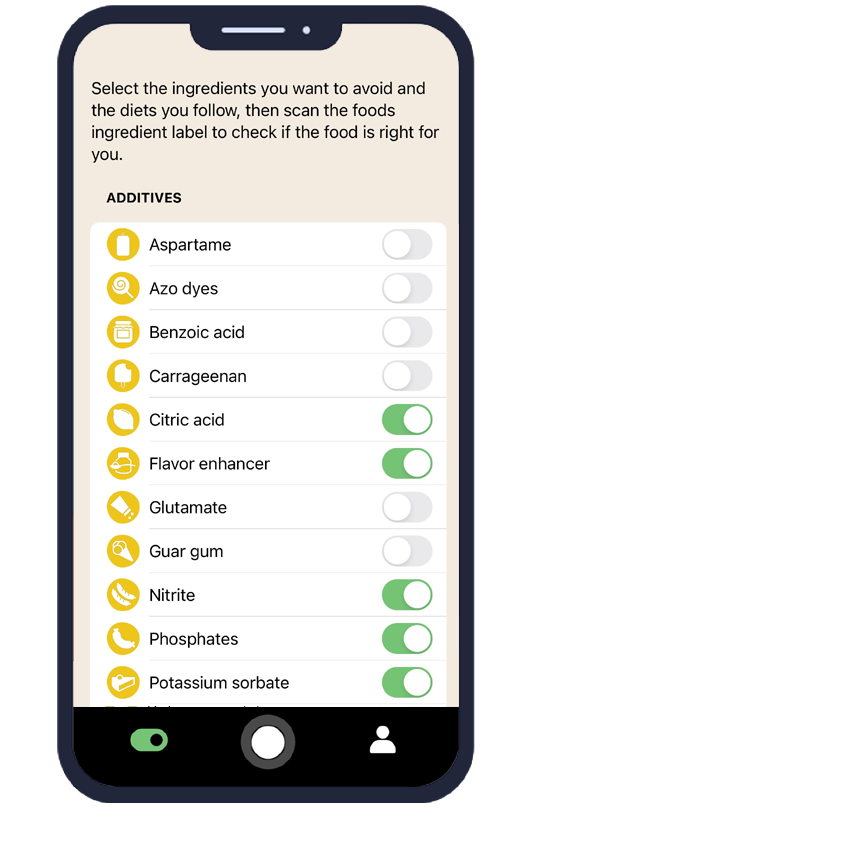Everything You Need to Know About Pea and How AI Eat This Can Help
Pea is increasingly common in modern food products, appearing as both a nutritious ingredient and potential allergen that affects millions of consumers worldwide. For individuals with Pea allergies, intolerances, or specific dietary restrictions, identifying this ingredient in packaged foods can be challenging and time-consuming. The AI Eat This mobile app revolutionizes food shopping by instantly scanning ingredient lists and alerting users to the presence of Pea and other concerning additives, making it easier than ever to maintain a safe and healthy diet.
What Is Pea and Where Is It Used?
Pea refers to ingredients derived from the legume Pisum sativum, commonly used in various forms throughout the food industry. These versatile legumes serve multiple purposes in food production, from providing protein and fiber to acting as natural thickening agents and flavor enhancers. Modern food processing techniques have made Pea-derived ingredients increasingly prevalent in packaged foods.
Pea appears in foods under various names and forms, including pea protein, pea starch, pea fiber, and pea flour. Food manufacturers value these ingredients for their nutritional benefits and functional properties. Understanding these different forms is crucial for consumers who need to avoid Pea for health or dietary reasons.
Common Foods Containing Pea
Pea ingredients can be found in a surprisingly wide range of food products. Plant-based meat alternatives frequently use pea protein as a primary ingredient to achieve meat-like texture and protein content. Protein bars, shakes, and nutritional supplements also commonly contain concentrated pea protein.
Other products that may contain Pea include:
- Gluten-free breads and baked goods
- Dairy-free milk alternatives
- Processed snack foods and crackers
- Soups, sauces, and ready meals
- Baby foods and infant formulas
- Sports nutrition products
Is Pea Safe? What Does the Research Say?
Regulatory Approvals and Guidelines
Pea ingredients are generally recognized as safe by major health authorities worldwide. The U.S. Food and Drug Administration classifies pea-derived ingredients as GRAS (Generally Recognized as Safe) for use in food products. Similarly, the European Food Safety Authority has approved various pea ingredients for use in European food products.
The World Health Organization recognizes legumes, including peas, as important components of healthy diets worldwide. These regulatory approvals are based on extensive safety studies and long histories of safe consumption. For most consumers, Pea ingredients pose no safety concerns and can contribute valuable nutrition to the diet.
Risks for Specific Groups
While Pea is safe for most people, certain individuals may experience adverse reactions. Pea allergies, though less common than other legume allergies, can cause symptoms ranging from mild digestive discomfort to severe allergic reactions. Some people with existing legume allergies may also react to Pea products due to cross-reactivity.
Individuals with digestive sensitivities may experience bloating, gas, or stomach discomfort when consuming large amounts of pea fiber or protein. Those following specific dietary protocols or managing certain medical conditions may also need to monitor their Pea intake carefully.
How Does AI Eat This Help You Avoid Pea?
The AI Eat This app transforms the way consumers identify Pea in food products through advanced ingredient scanning technology. Users simply point their smartphone camera at any ingredient list, and the app instantly analyzes the text in multiple languages. The artificial intelligence recognizes Pea in all its various forms and alternative names, alerting users immediately if the product contains this ingredient.
The app's personalized filter system allows users to create custom profiles based on their specific dietary restrictions and health needs. When Pea avoidance is selected, the app will flag any products containing pea protein, pea starch, pea fiber, or other pea-derived ingredients. This feature eliminates the guesswork and reduces the risk of accidental consumption.
Beyond simple detection, AI Eat This provides detailed information about why certain ingredients might be problematic and suggests alternative products. The app's database continuously updates to include new food additives and ingredient variations, ensuring comprehensive protection for users with Pea intolerance or allergies.
Who Should Avoid Pea?
Several groups of people may need to avoid or limit Pea consumption for health reasons. Individuals diagnosed with Pea allergy should completely avoid all pea-derived ingredients to prevent allergic reactions. Those with legume allergies may also need to exercise caution, as cross-reactivity between different legumes can occur.
People with digestive disorders such as irritable bowel syndrome (IBS) may find that pea fiber or protein triggers symptoms. Some individuals following low-FODMAP diets may need to limit certain pea products. Additionally, those with kidney problems may need to monitor protein intake from all sources, including pea protein supplements.
Parents of children with food allergies should be particularly vigilant, as Pea ingredients are increasingly common in processed foods marketed to families. Reading labels becomes especially important when managing multiple dietary restrictions simultaneously.
Tips for Maintaining a Pea-Free Diet
Successfully avoiding Pea requires a combination of label reading skills, product knowledge, and practical strategies. Always read ingredient lists carefully, as Pea can appear under various names including pea protein isolate, pea starch, and pea flour. Manufacturers may also list it simply as "plant protein" or "legume protein."
Focus on whole, unprocessed foods when possible, as these are less likely to contain unexpected Pea ingredients. Fresh fruits, vegetables, meats, and dairy products typically don't contain added pea-derived ingredients. When purchasing packaged foods, choose products with shorter ingredient lists and familiar ingredients.
Utilize technology like the AI Eat This app to streamline your shopping experience and reduce the time spent reading labels. The app's instant scanning capability makes it easy to check products quickly while shopping, ensuring you don't accidentally purchase items containing Pea.
Consider connecting with food allergy support groups and online communities where members share product recommendations and alert others to ingredient changes. These communities can be valuable resources for discovering Pea-free alternatives and staying informed about new products.
Conclusion
Understanding Pea as a food ingredient is essential for consumers managing allergies, intolerances, or specific dietary restrictions. While Pea ingredients offer nutritional benefits for most people, those who need to avoid them face the challenge of identifying these ingredients in an increasingly complex food supply. The AI Eat This app provides an innovative solution, combining artificial intelligence with user-friendly design to make food shopping safer and more efficient for people with dietary restrictions. Download AI Eat This for free testing today and take control of your dietary health with confidence!

70 filters
With over 70 filters, you can easily avoid certain ingredients and follow your dietary preference.

Paleo

Pescetarian

Ultra-processed food

Vegan







































































